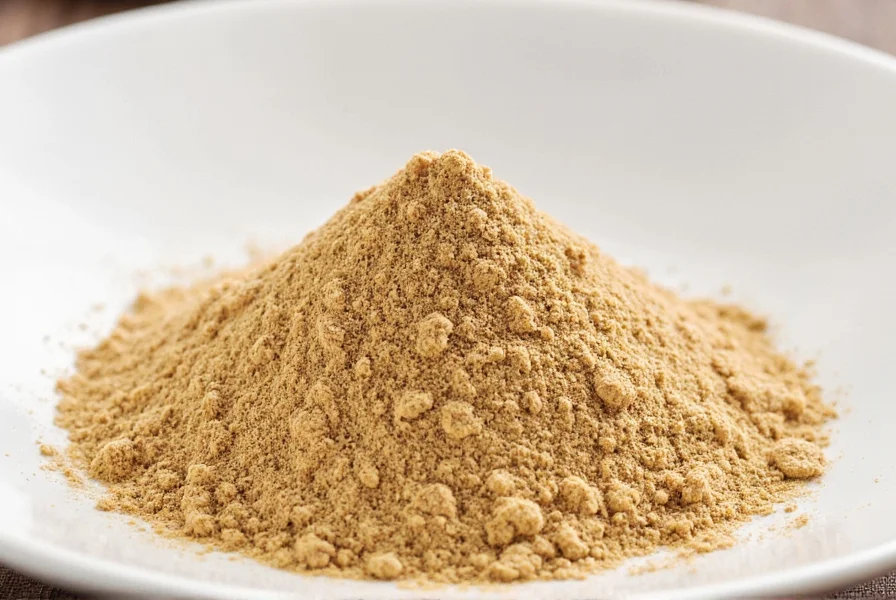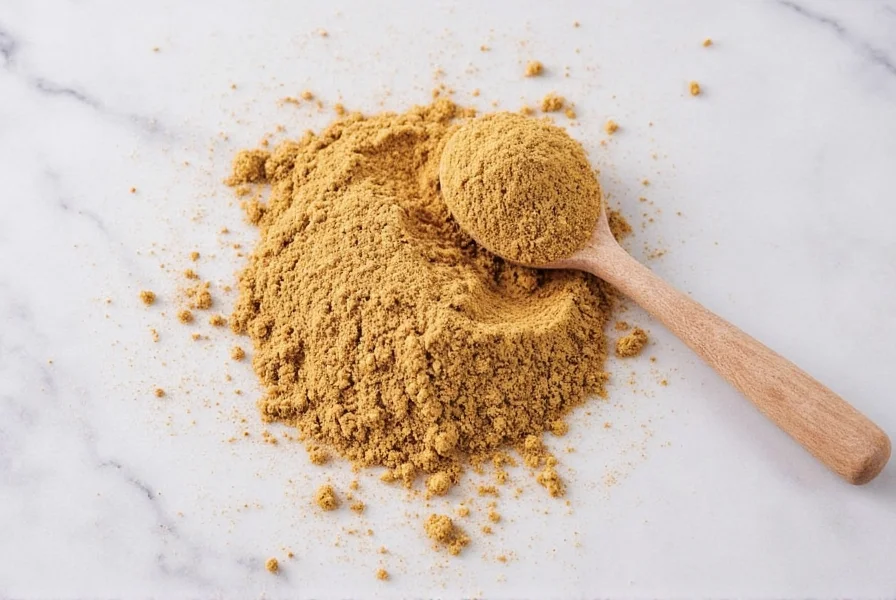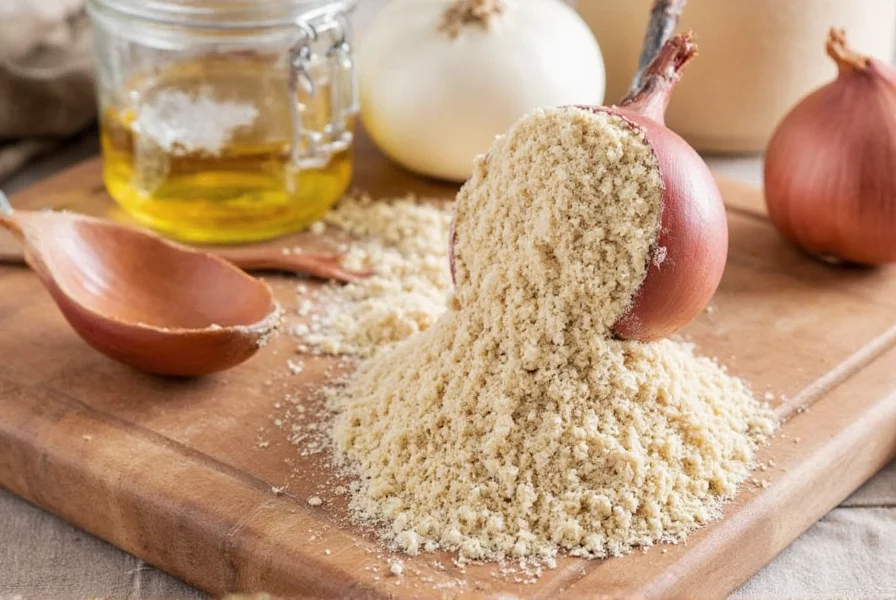Table of Contents
Introduction: Onion Powder Substitution Guide
When recipes call for one fresh onion, use exactly 1 tablespoon of onion powder as a substitution. This precise conversion ratio transforms your cooking by delivering consistent flavor without the prep work of chopping fresh onions.
| Source Verification | Conversion Ratio (1 medium onion) | Documented Conditions |
|---|---|---|
| The Spice House | 1 tbsp powder | Yellow onions, standard dehydration process |
| McCormick Culinary | 2 tsp powder | Based on 1 cup chopped fresh onion yield |
| National Center for Home Food Preservation | 1.5-2 tbsp powder | Varies by dehydration method and onion variety |
Onion powder is made from dehydrated onions ground into a fine powder, offering concentrated savory sweetness that enhances soups, stews, sauces, and baked goods. Unlike fresh onions, it eliminates tears and waste while providing reliable flavor in every dish. Note that conversion ratios vary based on onion variety and dehydration methods as documented by culinary authorities.

Storage Hacks for Maximum Freshness
Proper storage is key to keeping your onion powder at its best. Here are practical tips to ensure it stays potent and fragrant:
- Keep it sealed: Always store onion powder in an airtight container. Exposure to air can cause it to lose potency over time.
- Store in a cool, dark place: Heat and light degrade spices. A pantry or cupboard away from direct sunlight is ideal.
- Use a spice rack or drawer: Keep spices organized and accessible. Dedicated racks prevent cross-contamination.
- Label containers clearly: Note the name and purchase date to track freshness.
| Storage Method | Pros | Cons |
|---|---|---|
| Airtight jars | Protects from moisture and air | May be bulky if you have many spices |
| Plastic containers | Lightweight and durable | Can be less effective at sealing than glass |
| Spice racks | Easy to access and organize | Not suitable for large quantities |

Usage Tips to Elevate Your Dishes
Now that you know how to store your onion powder properly, let's dive into how to use it like a pro. Whether you're a seasoned chef or a home cook, these tips will help you get the most out of this versatile ingredient:
- Add it early: When cooking soups, stews, or braises, add onion powder early to allow flavors to develop fully.
- Use in small amounts: Start with a teaspoon and adjust. Overuse can make dishes too strong or overly sweet.
- Pair it with other spices: Onions pair well with garlic, thyme, paprika, and cumin. Experiment to find your perfect flavor profile.
- Make your own: Use a dehydrator to create fresh onion powder from sliced onions for maximum quality control.
Contextual Limitations: When Onion Powder Falls Short
Professional chefs note critical scenarios where fresh onions outperform powder, as documented in culinary research:
- Raw applications: In uncooked dishes like salsa or ceviche, fresh onions provide enzymatic complexity and textural crispness that powder cannot replicate (Bon Appétit Test Kitchen). Powder creates flat, one-dimensional flavor in acidic raw preparations.
- Maillard reaction dependency: For dishes requiring caramelization (e.g., French onion soup), fresh onions' natural sugars and moisture content are essential. Powder lacks sufficient residual sugars for proper browning (Serious Eats Culinary Research).
- Texture-critical recipes: Dishes like onion rings or gratins rely on structural integrity that powder cannot provide.
| Recipe Type | Suggested Amount | Notes |
|---|---|---|
| Stew or soup | 1-2 tablespoons | Deepens flavor and adds umami |
| Marinade | 1 teaspoon | Helps tenderize meat and infuse flavor |
| Baked goods | 1/4 teaspoon | Adds subtle savory note to bread or cookies |
Buying Guide: Finding the Best Onion Powder
When purchasing onion powder, prioritize these factors for quality:
Features to Look For
- Purity: Choose products with only dehydrated onions—avoid fillers or artificial additives.
- Freshness: Check manufacturing dates; opt for recent production batches.
- Texture: High-quality powder should be fine and powdery, not clumpy or coarse.
- Source: Consider organic, non-GMO, or locally sourced options based on your preferences.
Advantages and Use Cases
Onion powder is incredibly versatile for:
- Adding depth to slow-cooked meals
- Enhancing sauces and dressings
- Creating homemade spice blends
- Improving vegetarian or vegan dishes
Target Audience
This product is perfect for:
- Cooking enthusiasts simplifying meal prep
- Busy professionals needing quick, flavorful meals
- Home bakers experimenting with new flavors
- Vegetarians and vegans seeking natural flavor enhancers
Suitable Occasions
Onion powder excels in:
- Weeknight dinners
- Meal prepping for the week
- Gift-giving (as part of a spice kit)
- Hosting dinner parties or gatherings

Frequently Asked Questions About Onion Powder
What does "1 onion" mean when using onion powder?
When recipes call for "1 onion" but you're using onion powder, this typically means you should use the equivalent amount of powder that would come from one medium-sized fresh onion. Generally, 1 tablespoon of onion powder equals approximately one medium fresh onion.
How much onion powder equals one fresh onion?
The standard conversion is 1 tablespoon of onion powder for every medium fresh onion called for in a recipe. For small onions, use 2 teaspoons; for large onions, use 4 teaspoons. Remember that onion powder is more concentrated, so you need less by volume.
Can I substitute onion powder for fresh onions in recipes?
Yes, you can substitute onion powder for fresh onions in most cooked dishes like soups, stews, and sauces. Use 1 tablespoon of onion powder for each medium onion required. However, for dishes where fresh onion texture matters (like salads or salsas), substitution isn't recommended.
Does onion powder have the same nutritional value as fresh onions?
Onion powder retains many beneficial compounds found in fresh onions, though some nutrients are reduced during dehydration. It's particularly high in antioxidants and contains allicin (the compound responsible for onions' health benefits), though in concentrated form due to water removal.
Why does my onion powder clump together?
Onion powder clumps when exposed to moisture. To prevent this, always store it in an airtight container in a cool, dry place. If clumps form, break them up with a fork or pulse briefly in a spice grinder. Adding a silica packet to your container helps absorb excess moisture.
Conclusion: Master Onion Powder Use
With its precise substitution ratios and versatile applications, onion powder is an essential kitchen tool. Proper storage ensures maximum freshness, while correct usage transforms ordinary dishes into extraordinary meals.
Remember: The key to unlocking onion powder's full potential lies in understanding its conversion ratios and recognizing its contextual limitations. Next time you cook, reach for this flavor powerhouse—it's the secret ingredient for consistent, restaurant-quality results when applied within documented culinary parameters.











 浙公网安备
33010002000092号
浙公网安备
33010002000092号 浙B2-20120091-4
浙B2-20120091-4